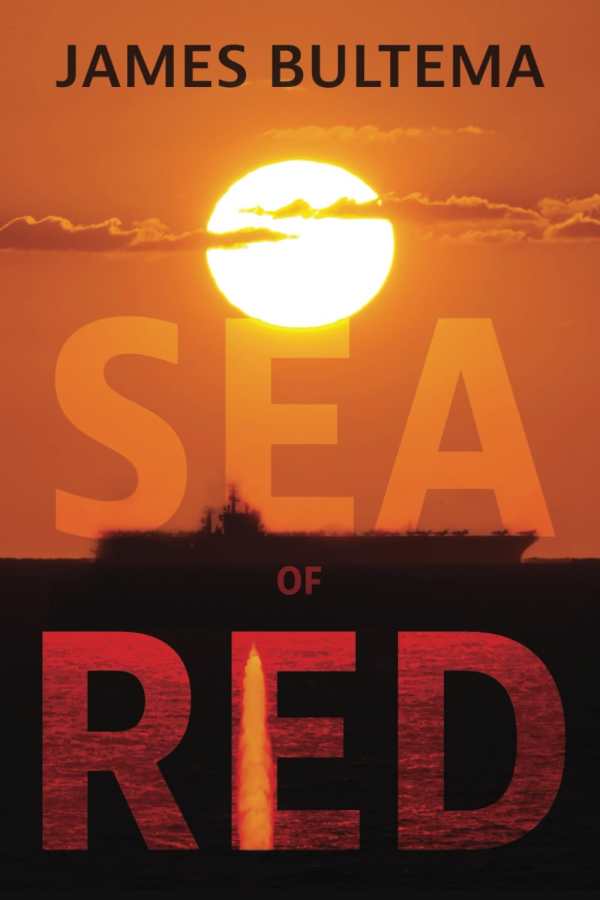Sea of Red
High stakes and well plotted, the military thriller Sea of Red reflects how real soldiers think and act.
In James Bultema’s gripping military thriller Sea of Red, the United States and China fight a bloody, escalating war over Taiwan’s independence.
A rogue president in China launches preemptive attacks on US Navy bases and aircraft carriers. The United States retaliates. The two sides trade missiles and torpedoes in air, land, and sea battles from South Korea to the Philippine Sea.
The book skews toward geopolitical, strategic, and technological coverage, with most of the conflict involving volleys of weapons and defensive maneuvers meant to avoid them. At one point, it compares a battle between tanks and helicopters to an Old West gunfight, with missiles as the new bullets. And it goes behind the scenes to focus on decisions made in seats of power too, including in the White House’s Situation Room and at NORAD command in Colorado. Even in covering rare firefights on the ground, the book focuses on firepower specifications, as where it itemizes machine guns by their number and type. The focus on the technical aspects of military equipment turns the battles bloodless, even as the death toll skyrockets.
Further, the book is stuffed with so many characters that its pages become disorienting. More prominent characters have sketched-in backgrounds—some including inspired, memorable details, as with a boy seeing a riderless horse when his father died after a fall. But most of the characterizations are too archetypal: there’s a Harvard graduate who preferred debate to athletics, a cowboy who grew up riding on the family ranch, and a handsome pilot who was near the bottom of his class because he only cared about flying. Similarly, a villain badgers, berates, and threatens his underlings, and a principled hero sacrifices himself for the greater good in a moment of grace. Hackneyed monikers are a further point of distraction: the character list includes Mad Dog, Danger, and Snake Eyes.
The writing is filled with acronyms and jargon to an extent that it is often impenetrable at inopportune times. Its phrasing is often garbled, convoluted, or odd. There are occasional strokes of inspiration, though, as with a description of a pilot feeling “like his entire body was being smothered by a gym full of weights.” When it’s not mired in technical language, the book elucidates military protocols with perfect comprehensibility, explaining what a “red shoot” means and how a seasoned officer “had never heard those words uttered in real life.” And characters’ exchanges are authentic, such as during radio communications and when officers bark orders; the profanities reflect how real soldiers speak.
As it jumps from one aerial or naval battle to another in an escalating tit-for-tat exchange, the story comes to feel high stakes and well plotted. However, it also replays the same scene of attacks resulting in mass death several times, hitting the exact same notes. Still, its climactic conflict and Machiavellian scheming result in satisfying comeuppance.
In the action-packed military thriller Sea of Red, the United States and China go to war.
Reviewed by
Joseph S. Pete
Disclosure: This article is not an endorsement, but a review. The publisher of this book provided free copies of the book and paid a small fee to have their book reviewed by a professional reviewer. Foreword Reviews and Clarion Reviews make no guarantee that the publisher will receive a positive review. Foreword Magazine, Inc. is disclosing this in accordance with the Federal Trade Commission’s 16 CFR, Part 255.

